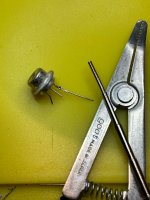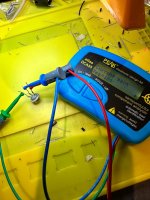Will be that guy, but it's in kindness.
Next time the legs look short, don't snip the, desolder them.
Quick dab of fresh leaded solder, taking your time between additions and using a heat sink(alligator clip on the leg works well). You want the old solder to just liquidy without flowing as much as possible to avoid flowing too much toward the component/opposite side of the pcb.
Flux pen won't hurt.
Then, if you have a desoldering gun, go for it. If not, grab your braid and apply ample flux to the clean braid. Desolder hot and fast, IMO. Always use clean braid. Trim the dirty stuff and start fresh each time, having ample braid on *both* sides of your tip. Give the solder twice the path.
As long as you are avoiding prolonged heat and spacing your attempts to allow cool down, the components will be fine.
Remember, someone put them in the board with short legs and they lived all these decades.
I know this wasn't the original question but, this so the way.
Practice on a few non-worthy components.








